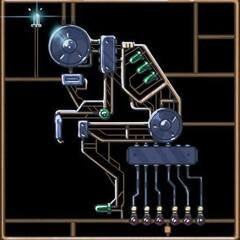LSI MegaRaid controller with 10TB drives?
18 minutes ago, bfairs said:As to why RAID10 over RAID6: when initially setting it up a couple of years ago, I read that 10 is faster and safer than 6. With 4 drives, they also have the same capacity. Is the opposite true though?
For sequential reading and writing RAID 6 is faster because there are more active disk spindles that can be used for I/O operations, RAID 10 you lose half of them. Modern RAID cards such as yours have much faster processors on them so can do parity calculations very quickly and with write-back cache the overall achievable performance is very good, can be much higher than RAID 10.
RAID 10 is still recommended for high random write I/O tasks were latency consistency is important such as database servers. However this is becoming less true, for quite a few years now all enterprise disk systems pooled disks in a RAID 6 like manor.
As for redundancy and reliability of RAID 6 vs RAID 10 in practical real world terms both are effectively as safe as each other. RAID 10 can become less safe than RAID 6 if there is a very large number of disks in the array because the chances of a 2 disk failure in the same mirror happening increases, this usually happens after a disk has failed and you put in a new one and start the rebuild.
The most common time for disks to fail is during a rebuild as disks get stressed much more than usual for a long period of time and if a disk fails during the rebuild and it's a RAID 10 array the whole array is dead, if it's the partner disk in the mirror pair being rebuilt but that is the most likely disk to fail. RAID 5/6 have their own downside too for array rebuilds as every disk in the array gets stressed during a rebuild and if all the disks are old you can get a cascading disk failure and lose the array.
Basically the most risky time for a RAID array is a rebuild after a failed disk has been replaced, rather ironic if you think about why RAID exists in the first place.
For some actual performance differences of RAID 10 vs RAID 6 for the type of use case you have @scottyseng should be able to give you those, he converted over to RAID 6 a while ago.















Create an account or sign in to comment
You need to be a member in order to leave a comment
Create an account
Sign up for a new account in our community. It's easy!
Register a new accountSign in
Already have an account? Sign in here.
Sign In Now